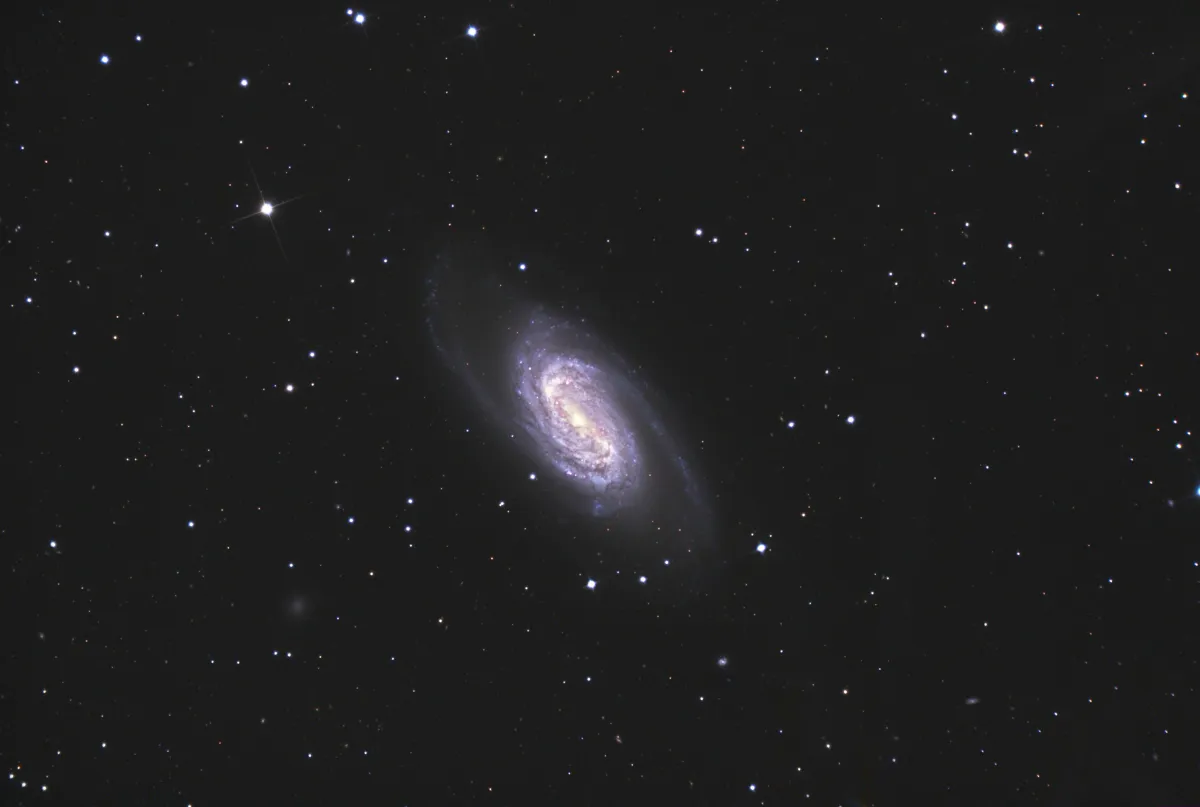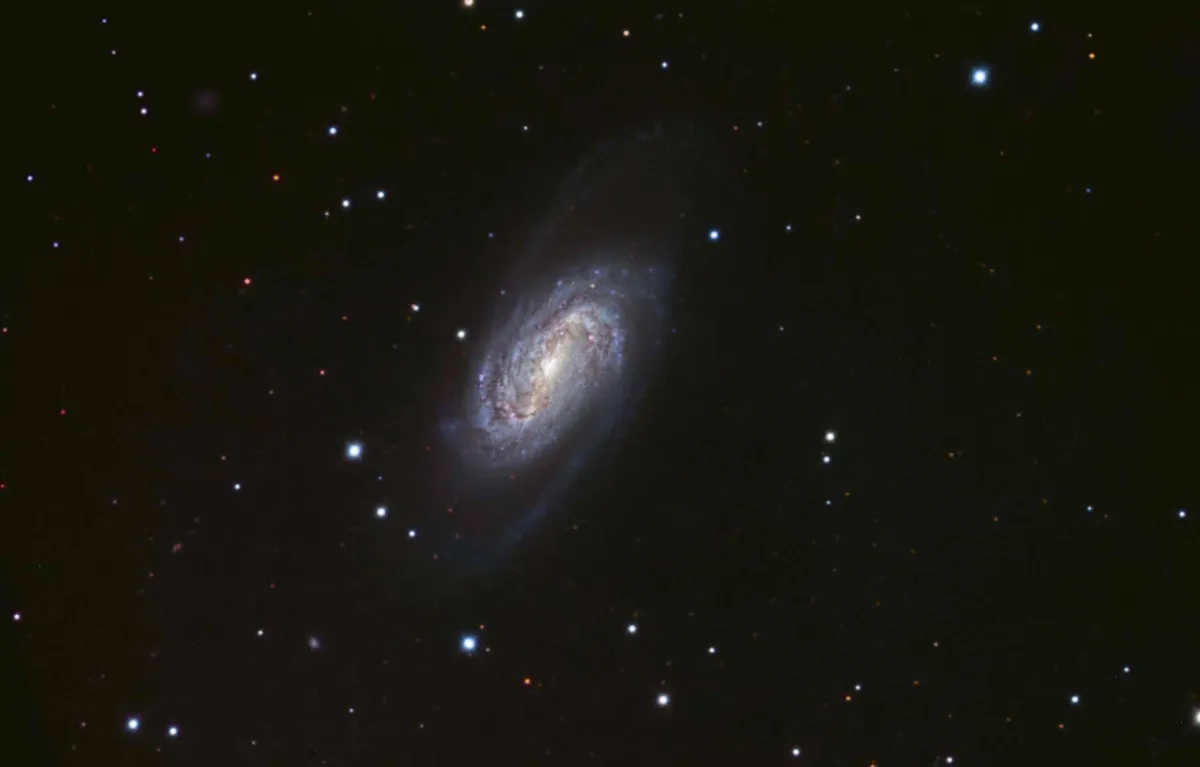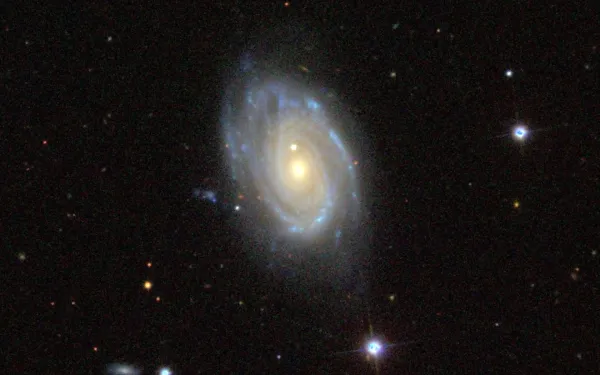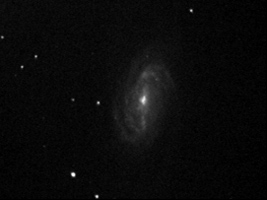Galaxies NGC 2903 & NGC 2916
History
The galaxy NGC 2903 was discovered by William Herschel on 16 November 1784 and cataloged as I 56. He spotted another faint nebula northeast of it, which he cataloged as I 57 and later was assigned by Dreyer as NGC 2905. Herschel noted: «Two, at 1' distance. Both considerably bright, considerably large, appear like one much extended». In the same night he also found about forty arc minutes west another faint nebula which he cataloged as II 260 (NGC 2916) and described as «faint, pretty small, little extended» [464]


Physical Properties

According to NED the galaxy NGC 2903 has the Hubble-Vauculeur morphological type SAB(rs)bc, which is an intermediate form from a spiral galaxy to a barred spiral and has a ring structure. Simbad lists the type SBbc as a barred spiral, escape velocities of 506 km/s to 556 km/s measured since 2000 and distances of 6.6 Mpc to 10.0 Mpc (21.5 to 32.6 million light years) measured with redshift and Tully-Fischer relation. NGC 2905 is is a bright star-forming region within the same galaxy [145, 194, 196]
NGC 2916 is a spiral galaxy of morphological type SA(rs)b? and from the Seyfert 2 type activity. Measured heliocentric velocities of 3716 km/s to 3722 km/s reveal a much higher distance, which is 40 Mpc to 54 Mpc (130 to 176 million light years). [145, 194, 196][145, 194, 196]
| Name | RA | Dec | Type | bMag | vMag | B-V | SB | Dim | PA | z | D(z) | MD | Dreyer Description | Identification, Remarks |
|---|---|---|---|---|---|---|---|---|---|---|---|---|---|---|
| NGC 2903 | 09 32 09.7 | +21 29 57 | Gx (SBbc) | 9.7 | 9.0 | 0.7 | 13.5 | 12.6 × 6 | 17 | 0.001855 | 7.84 | 9.060 | cB, vL, E, gmbM, r, sp of 2 | WH I 56; h 604.1; GC 1861; UGC 5079; MCG 4-23-9; KARA 347; CGCG 122-14 |
| NGC 2905 | 09 32 11.8 | +21 31 07 | GxyP | 15.0 | 0.1 | 9.060 | vF, cL, R, psbM, r, nf of 2 | WH I 57; h 604.2; GC 1863; part of N 2903 | ||||||
| NGC 2916 | 09 34 57.5 | +21 42 16 | Gx (Sb) | 12.7 | 12.1 | 0.6 | 13.4 | 2.5 × 1.7 | 20 | 0.012442 | 52.55 | 40.600 | F, S, vlE | WH II 260; h 610; GC 1872; UGC 5103; MCG 4-23-11; CGCG 122-21; IRAS 09321+2155 |
Finder Chart
The galaxy NGC 2903 is located about 1.5° south of the star λ Leonis in the constellation Leo. The best observation time is October to July.
Visual Observation

762 mm aperture: The visual impression can be roughly reproduced with a MallinCam video camera and an integration time of around three seconds. A tracking 30 inch f/3.3 SlipStream Dobsonian was used. The resulting image comes very close to visual vision with a 13 mm Tele Vue Ethos eyepiece.
